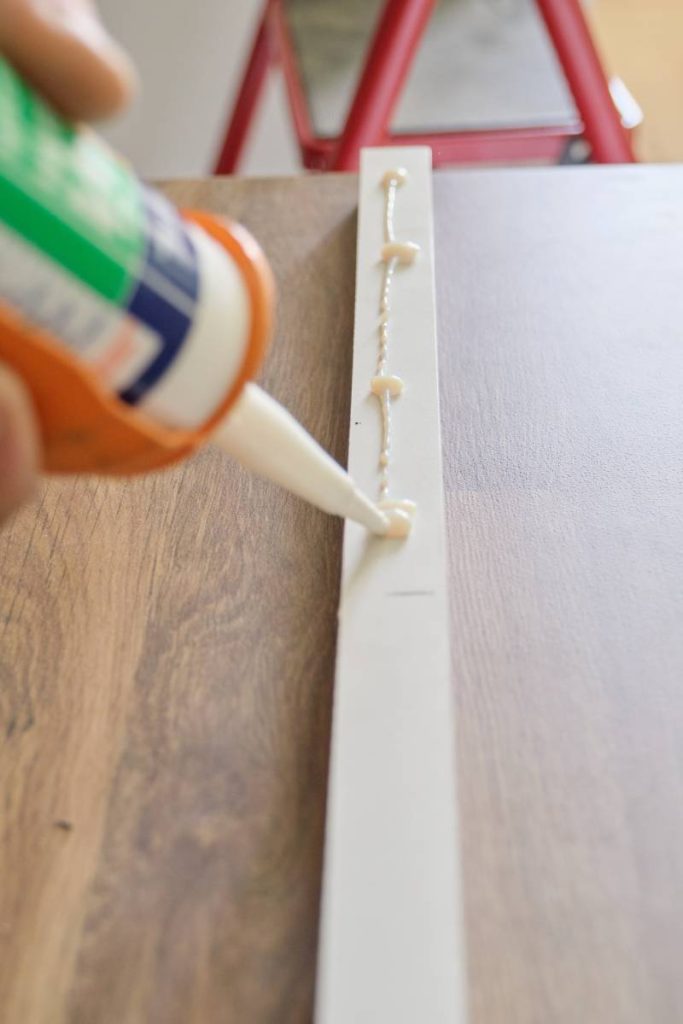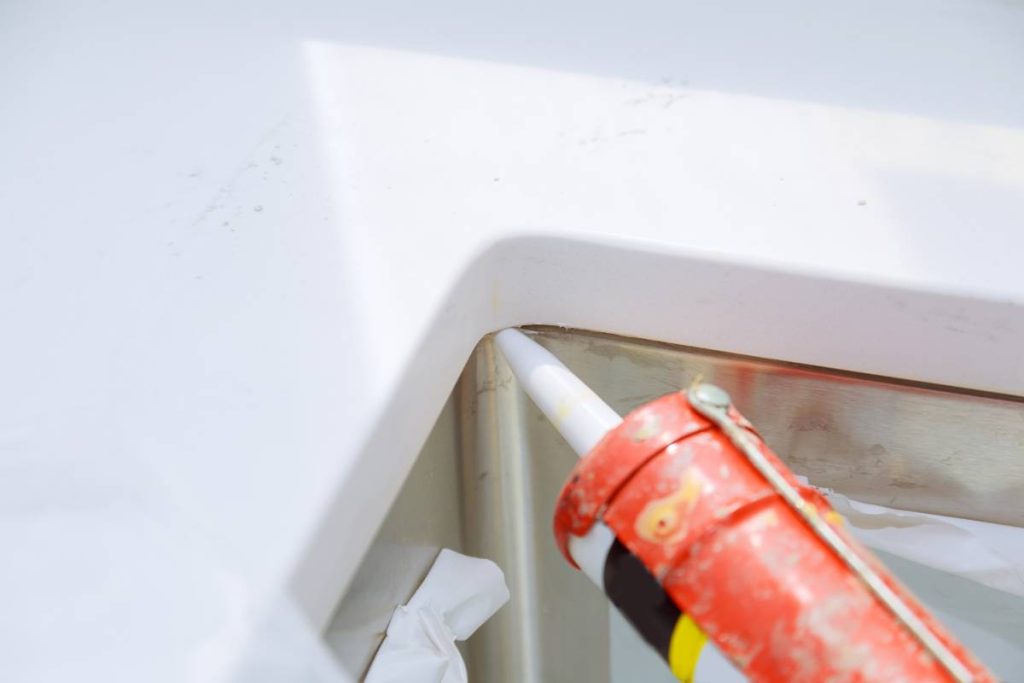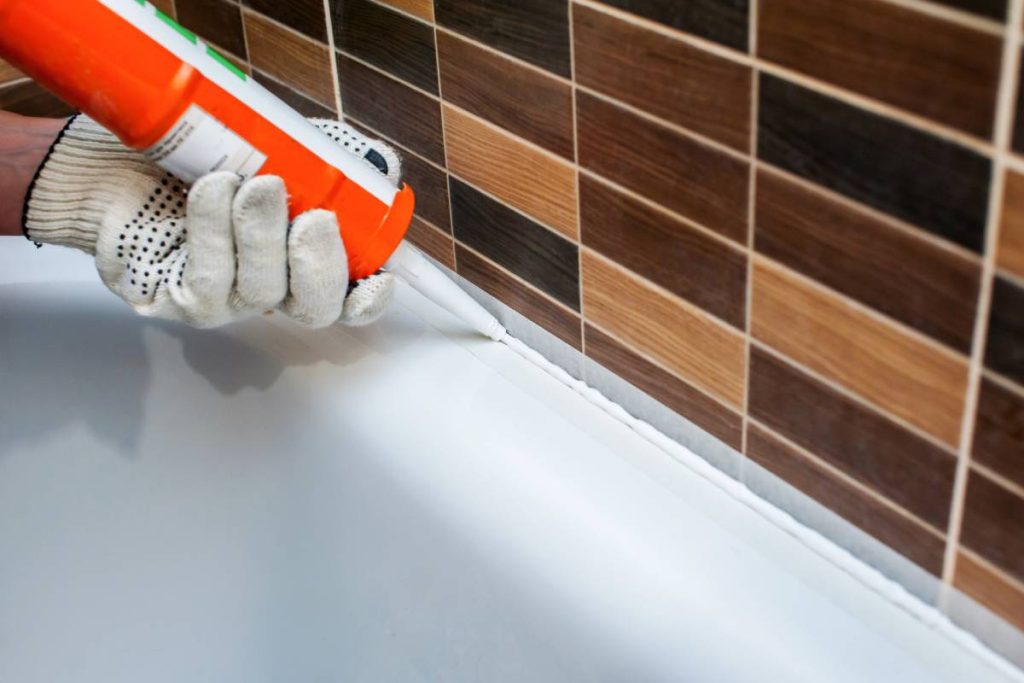Silicone caulk is a popular choice for sealing joints and gaps in DIY projects and professional settings. But sometimes it’s not the best option and checking out other choices can be crucial for successful results.
In this article, we’ll look at some situations where silicone caulk might not be the best and suggest alternative sealants that work better for specific projects. By knowing the strengths and weaknesses of different sealants, you can make sound decisions and ensure your sealing projects are a success.
What is silicone caulk and what is it used for?
Silicone caulk is a type of sealant made from silicone, a synthetic polymer. It is typically available in a viscous liquid form that cures into a flexible rubber-like material when exposed to moisture in the air. This curing process creates a durable and waterproof seal that adheres well to a variety of surfaces, including glass, metal, plastic, and ceramic.
How does silicone caulk work?
Silicone caulks work through a process called curing. When applied, the caulk reacts with moisture in the air to form a solid, rubbery seal. This curing process can take anywhere from a few hours to a day, depending on factors such as temperature and humidity. Once fully cured, silicone caulk becomes waterproof, flexible, and resistant to temperature extremes, making it suitable for both indoor and outdoor use.
Uses of silicone caulk

- Sealing Bathtubs and Showers: Silicone caulk is commonly used to seal joints and seams in bathtubs, showers, and sinks, preventing water from leaking into walls and floors.
- Window and Door Sealing: It is effective for sealing gaps around windows and doors, helping to improve energy efficiency by preventing drafts and moisture infiltration.
- Kitchen and Bathroom Fixtures: Silicone caulk can be used to seal around kitchen and bathroom fixtures such as sinks, faucets, and countertops, providing a waterproof barrier against water damage.
- Exterior Applications: It’s suitable for outdoor applications such as sealing joints in siding, trim, and gutters, protecting against moisture and weather damage.
- HVAC Systems: Silicone caulk is used to seal gaps and joints in heating, ventilation, and air conditioning (HVAC) systems to prevent air leakage and improve energy efficiency.
- DIY Projects: It’s handy for various DIY projects, including repairing cracks in concrete, sealing gaps in walls, and attaching trim and mouldingWhere should you not use silicone caulk?
Tips for using silicone caulk
- Surface Preparation: Ensure surfaces are clean, dry, and free of dust and debris before applying silicone caulk.
- Application: Use a caulking gun to apply a smooth and even bead of caulk along the joint or seam to be sealed.
- Tooling: Use a caulk tool or your finger dipped in soapy water to smooth and shape the caulk for a professional finish.
- Curing Time: Allow adequate time for the caulk to cure fully before exposing it to water or other elements.
- Ventilation: Work in a well-ventilated area when applying silicone caulk, as the fumes can be strong.
Where should you not use silicone caulk?
Silicone caulk is a versatile and effective sealant, but there are certain situations where it is not the best choice. Understanding where not to use silicone caulk can prevent potential issues and ensure successful project outcomes. Let’s explore some common scenarios where silicone caulk should be avoided.
1. Porous surfaces
Silicone caulk adheres best to non-porous surfaces such as glass, metal, and glazed ceramics. It struggles to bond with porous materials like wood, unglazed tile, and concrete. Using silicone caulk on porous surfaces may result in poor adhesion, leading to leaks or gaps in the seal. For porous surfaces, it’s better to use a sealant specifically designed for those materials, such as polyurethane or acrylic caulk.
2. Surfaces exposed to high heat
While silicone caulk is resistant to temperature extremes, it has its limits. It should not be used in areas exposed to constant high heat, such as near stovetops, ovens, or fireplaces. Prolonged exposure to extreme heat can cause silicone caulk to degrade, discolour, or emit unpleasant odours. For high-temperature applications, specialized heat-resistant sealants like silicone rubber or fireplace sealant are more suitable.

3. Moving joints and surfaces
Silicone caulk is flexible, but it is not designed to withstand constant movement or stress. Using it to seal joints or surfaces that experience frequent movement, such as expansion joints or door hinges, can lead to premature failure. In these cases, flexible caulks like polyurethane or hybrid polymer sealants are better options, as they can accommodate movement without cracking or breaking the seal.
4. Paintable surfaces
While some silicone caulks claim to be paintable, they may not provide satisfactory results. Silicone caulk tends to repel paint, making it difficult to achieve good adhesion and a smooth finish. If painting over caulking is necessary, it’s best to use a paintable acrylic latex caulk, which is specifically formulated to accept paint and can be seamlessly integrated into the painted surface.
5. Submerged or constantly wet areas
Although silicone caulk is waterproof once cured, it is not suitable for prolonged immersion or constant exposure to water. In areas such as submerged joints in swimming pools, fish tanks, or fountains, silicone caulk may eventually break down or develop mold and mildew. For these applications, specialized underwater sealants or marine-grade caulks should be used to ensure long-lasting waterproofing.
6. Structural applications
While silicone caulk is excellent for sealing joints and gaps, it should not be relied upon for structural support. It lacks the strength and adhesive properties necessary for load-bearing applications. For structural bonding or repairs, epoxy adhesives or construction adhesives are more appropriate choices.
Is there anything better than silicone caulk?
Yes, there are several alternatives to silicone caulk, each with its own advantages depending on the specific application and requirements. Here are some popular alternatives:
1. Polyurethane caulk
- Advantages: Polyurethane caulk is highly flexible and durable, making it suitable for joints that experience movement or stress. It adheres well to a variety of surfaces, including both porous and non-porous materials. It is also paintable and resistant to weather and UV exposure.
- Best For: Outdoor applications, expansion joints, concrete, wood, and areas prone to movement.
2. Acrylic latex caulk
- Advantages: Acrylic latex caulk is easy to use, dries quickly, and is paintable. It provides good adhesion to most surfaces and is available in a variety of colours. It’s also more affordable than silicone caulk.
- Best For: Interior sealing, baseboards, trim work, and non-wet areas.

3. Hybrid polymer sealants
- Advantages: Hybrid polymer sealants combine the best properties of silicone, polyurethane, and acrylic caulks. They offer excellent adhesion, flexibility, and durability, along with resistance to moisture and UV exposure. They are paintable and can be used in a wide range of applications.
- Best For: Versatile applications, including indoor and outdoor sealing, wet areas, and joints prone to movement.
4. Butyl rubber caulk
- Advantages: Butyl rubber caulk provides superior water resistance and remains flexible over time. It has excellent adhesion and can withstand extreme temperatures. It’s commonly used for sealing roof flashing and gutters.
- Best For: Roofing, gutters, and outdoor applications where water resistance is critical.
5. Modified silicone caulk
- Advantages: Modified silicone caulks combine the flexibility of silicone with improved adhesion to a wider range of surfaces. They are often paintable and offer better performance in high-moisture environments.
- Best For: Bathrooms, kitchens, and other wet areas where high moisture resistance is required.
6. Epoxy Adhesives
- Advantages: Epoxy adhesives provide strong, durable bonds and are suitable for structural applications. They offer excellent resistance to heat, chemicals, and moisture.
- Best For: Bonding materials together, repairs, and structural applications.
Choosing the best alternative to silicone caulk depends on factors such as the specific application, surface material, environmental conditions, and desired properties like flexibility, adhesion, and paintability. It’s essential to select the right sealant for each job to ensure optimal performance and longevity.
Conclusion
While silicone caulk is a versatile sealant with many benefits, it’s essential to recognize its limitations and consider alternative options for specific sealing tasks. By avoiding the pitfalls of using silicone caulk in unsuitable situations and choosing the right sealant for each application, you can achieve superior results in your home improvement, construction, or DIY projects. Whether you need flexibility, paintability, resistance to moisture, or strong adhesion, there’s a sealant out there that’s perfectly suited to your needs.
So, next time you reach for the caulking gun, remember to consider where and what you’re sealing, and choose accordingly for a job well done.
